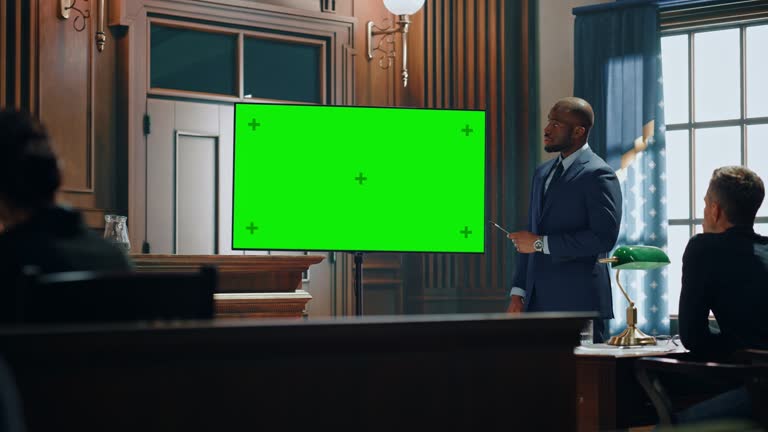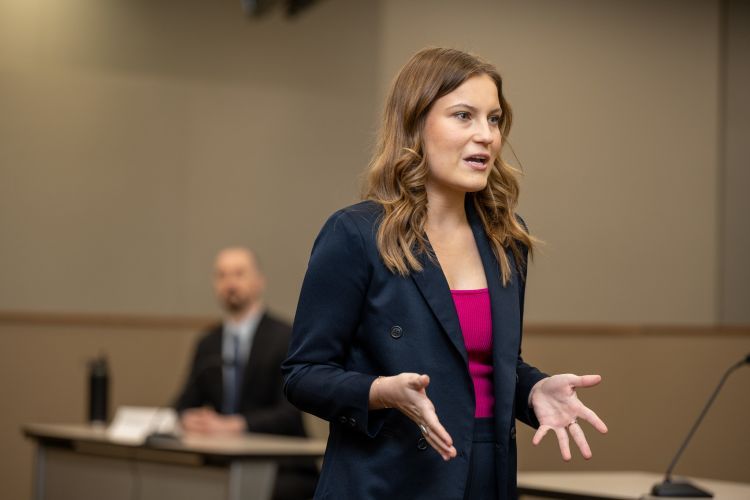The Duty of Aesthetic Help in Effective Trial Presentations: An Overview for Lawyer
Navigating the Intricacies of Trial Presentations: Tips for Seamless Distribution and Compelling Arguments
In the world of lawful proceedings, the art of trial presentation stands as a vital component of success. The complexities inherent in test discussions call for a delicate balance of skill, method, and skill.

Understanding Trial Goals
To properly navigate a trial, it is critical to have a clear understanding of the objectives that need to be accomplished. Prior to entering the courtroom, legal teams need to specify their goals and desired results. These purposes offer as guiding principles throughout the test, forming approaches and influencing decision-making processes.
Understanding trial goals includes a thorough evaluation of the case, legal precedents, and the client's benefits. Trial Presentations. It calls for a thorough examination of the facts, identifying essential problems, and expecting prospective difficulties. By establishing specific and measurable goals, attorneys can tailor their arguments and discussions to straighten with the wanted outcomes
In addition, a clear grip of test purposes allows legal teams to prioritize proof, witnesses, and lawful disagreements successfully. It permits the advancement of a coherent narrative that resonates with the court and court, enhancing the general case discussion.

Organizing Evidence Efficiently
Having a clear understanding of test goals lays the foundation for organizing evidence effectively in lawful process - Trial Presentations. By lining up the presentation of evidence with the desired end results of the test, legal teams can reinforce their debates and improve their persuasiveness. One important element of organizing proof is classification. Grouping evidence based upon styles or significance to specific lawful elements can assist simplify the presentation and make intricate information a lot more absorbable for the court or jury.
Another trick component in organizing evidence efficiently is developing a rational flow. Offering evidence in a consecutive and coherent manner can assist construct a compelling narrative that sustains the legal arguments being made. Furthermore, utilizing visual aids such as timelines, graphs, or graphes can further enhance the organization of proof and assist in clearing up intricate relationships or sequences of events.
In addition, making sure that all proof presented is admissible and relevant to the case is vital. Unnecessary or inadmissible evidence can interfere with the toughness of the argument and possibly harm the reputation of today event. A thorough testimonial and selection process need to be undertaken to include only the most impactful and legally sound proof in the test discussion.
Crafting Influential Stories
Crafting engaging stories plays a critical duty in offering convincing arguments throughout legal proceedings. When creating a narrative for a test discussion, it is crucial to develop a clear storyline that highlights vital factors and connects them in a systematic way. By weaving with each other proof, testimony, and lawful arguments right Full Report into a convincing and cohesive story, legal specialists can efficiently support for their clients and increase the probability of a favorable end result in the courtroom.
Understanding Visual Help
Reliable use aesthetic aids is vital to enhancing the influence and clarity of trial discussions. Visual aids, when made use of strategically, have the power to streamline intricate information, strengthen bottom lines, and leave a long-term perception on the discretionary. To master visual help in test presentations, it is vital to ensure that they are clear, concise, and appropriate to the debates being made.
When incorporating visual help, such as graphes, photos, timelines, or charts, right into a test discussion, it is vital to keep them aesthetically appealing yet specialist. The visuals must enhance the spoken debates, providing a graph of the info being gone over without frustrating the target market with unneeded information.
In addition, exercising with the aesthetic help ahead of time is crucial to make certain a smooth distribution throughout the test. Acquainting oneself with the material, shifts, and timings of each aesthetic help can assist preserve the flow of the presentation and avoid technical glitches that may occur.
Providing Impactful Closing Disagreements
A compelling closing disagreement serves as the end result of a trial discussion, encapsulating the core story and convincing the judge and court towards a positive decision. Begin by laying out the primary debates that support your customer's placement, highlighting why the proof provided throughout the test supports your story.
Moreover, including sob story can further enhance your closing argument. By humanizing the situation and connecting on a personal degree with the decision-makers, you can evoke compassion and understanding, affecting their perception of the realities presented. Furthermore, stating the legal requirements that have to be met for a positive judgment can reinforce the credibility of your placement. Ultimately, a well-crafted closing debate ought to leave an enduring impression, compelling the discretionary to regulation in your customer's support.
Conclusion
To conclude, grasping trial presentations includes recognizing purposes, arranging proof, crafting stories, making use of visual aids, and delivering impactful closing arguments. By executing these methods successfully, attorneys can provide their situation effortlessly and make engaging disagreements in the court. It is vital to browse the complexities of trial why not try this out presentations with accuracy and skill to attain success in legal proceedings.
By straightening the presentation of evidence with the wanted results of the test, lawful teams can strengthen their arguments and enhance their persuasiveness (Trial Presentations). To master aesthetic help in test presentations, it is important to guarantee that they are clear, concise, and relevant to the debates being made
An engaging closing disagreement serves as the end result of a test presentation, encapsulating the core story and convincing the court and court in the direction of a desirable decision. Begin directory by describing the main debates that sustain your client's placement, highlighting why the evidence presented throughout the test supports your story.In final thought, understanding trial presentations involves recognizing goals, organizing evidence, crafting narratives, making use of visual aids, and supplying impactful closing arguments.